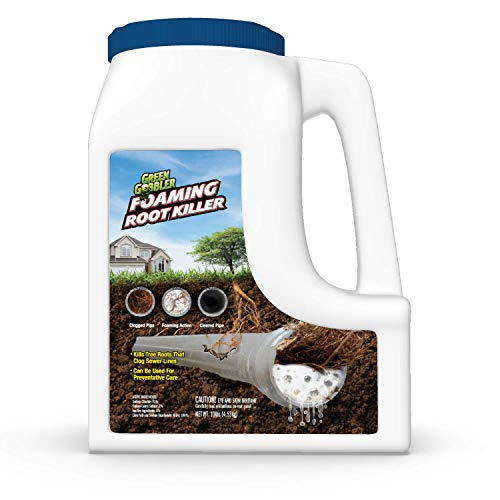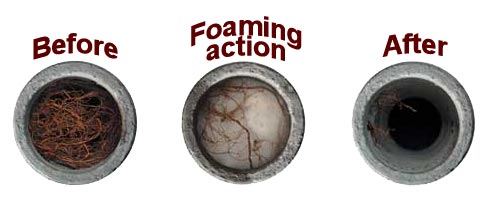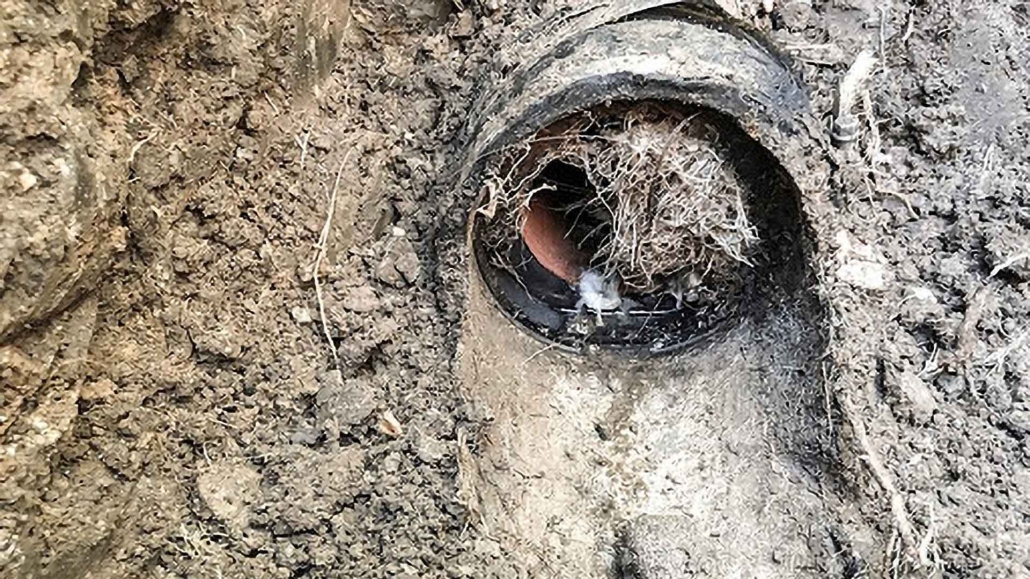Is Foaming Root Killer Ok To Use With My Plumbing Pipes? (Review & Opinion)
Today, we’re talking about foaming root killers and if they are a good or bad for your plumbing system. But first, let’s talk about a common scenario most find themselves in when dealing with common plumbing issues.
We’ve all dealt with clogged sinks or an overflowing toilet and it usually happens at the worst time – like when you’re getting ready for work. It can be very annoying and even worse expensive to fix. You may even try to tackle the problem on your own with a simple solution like pouring a gallon of Drano down the sink, hoping it will solve the issue. You may even go as far as rushing to Home Depot and purchasing a drain snake to fix the problem on your own hoping to avoid calling a plumber. Although this may work sometimes, it could only be a temporary solution. And when it doesn’t work out the way you planned, the next step is hitting the internet and doing a quick search on how to unclog the kitchen sink and how to drain my toilet after overflowing. Then, after spending countless hours online and watching a ton of videos on YouTube, you come across an ad for a root killer. Here’s where the journey down the rabbit hole begins.
Foaming Root Killers – What Are They & How Do They Really Work?
By now, you’re aware of a common plumbing problem and it possibly has to do with roots making their way into your main sewage system, commonly referred to as tree root intrusion. Additionally, you may also be thinking to yourself, what do tree roots have to do with my plumbing and how did they get there. If you skipped your biology class in high school, you might have missed an important lesson about botany and how it applies to gardening and your home.
Roots are known to grow towards sewer pipes because they hold water and the essential nutrients and oxygen for roots to survive. And if the root finds a crack or leak in your plumbing system, they’ll creep in the pipe wall and grow into the pipe, blocking off the flow of waste into the sewer. The tree roots in the sewer line will eventually start to catch onto larger pieces of waste such as toilet paper and baby wipes that will create clogs. This is the point when you’ll start to notice issues in the house, such as slow drains or strange odors coming from the sink or the ground underneath your house. So for this problem, rather than calling a plumber the companies who created root killer will sell you on the idea of magic in a bottle.
Now let’s dive into what these miracle solutions are made of and what they promise to do.
What is a foaming root killer?
Foaming Root Killer is a product that was developed in a lab which consists of foaming agents such as an herbicide called dichlobenil combined with sulfamic acid and other elements in the formula. When these chemicals come in contact with water, an immediate chemical reaction begins and foam will develop to fill the entire pipe line with what is considered to be the root killing agent. Most producers of foaming root killers claim their product will clear your pipes and stop the growth of new roots. They also claim to be safe for all plumbing types, easy to use and, when used regularly, will maintain your sewer system and prevent it from happening again if applied properly between tree roots and sewer lines.
How do you use foaming root killer?
For the most part, foaming root killer is pretty easy to use. When using root killer for sewer lines that have root problems, you add an entire pound of this solvent to your toilet bowl and flush immediately to avoid foam overflowing the bowl as it is an instant reaction when it comes in contact with water. Flush a second time to push the foam completely into your sewer line, and a third time if you have a 1.6 gallon low flow toilet. When done, you must restrict your water usage for four to six hours. Unlike traditional drain cleaners, do not apply through your sink or tub.
If you decide to use it as preventive maintenance for root control along your sidewalks and driveways, it is recommended that you cut a minimum of 3″ or deeper along the edges of your home or driveway and pour thin strips of foaming root killer at 2 oz. per foot . Then cover the edged area with soil.
Immediately following application, thoroughly water the treated area to water it into the ground. You are not to come in contact with the treated areas until the soil has dried.
How long does it take for foaming root killer to work?
According to the producers of foaming root killer, it should take 2 days and up to 1 week for the foam to clear your sewer line. Your plumbing system must have some water flow in order for it to work properly. If the foam cannot get to the roots, it cannot kill them.
Do Foaming Root Killers Work?
Foaming root killers do work but are not for those who use a septic tank for their waste. In fact, they were specifically designed just to do that – kill roots. As mentioned earlier, they have been developed and tested in a lab against all possible conditions in a sewage pipe. Copper sulfate was a common root killer in the past, but is no longer recommended to use . Although it’s effective for killing tree roots, copper sulfate is bad for all types of plumbing pipes and has been found to kill helpful bacteria in your sewage line that breaks down the waste and promotes healthy plumbing.
For the most part, foaming tree root killer is considered a modern invention and is preferred by most homeowners who opt for a cheap solution to their plumbing problems. Although this seems like the perfect solution, tree root killer will not tell you if the problem is actually caused by roots.
To be transparent, not all sewer clogs are caused by tree roots. A sewage line can clog for many reasons such as flushing tampons down the toilet or accidently dropping an obstruction into the drain like kitty litter, Q-Tips or hair ties. If you’re routinely flushing solvents down your toilet to clear a clog without really knowing that your sewer problems are caused by roots, you could be causing more harm to your already fragile plumbing system. In fact, tree root killer does not seal existing cracks in your pipes which is the reason behind roots entering into your plumbing system in the first place. The best way to tell if your backup is being caused by roots is to contact a plumber to do a walkthrough of your home and to perform a video inspection of your pipes.
Do Foaming Root Killers Damage Your Pipes?
Unfortunately, we’re not sure root killers will not damage your plumbing pipes. Only time will tell. And the only way to know if the root killer is doing its job is to hire a plumber to do a video inspection to asses the condition of your pipes. If this is a recurring problem, you may want to reconsider taking the easy way out and call your local plumber.
It’s also important to know that the manufacturers of root killers suggest using it twice per calendar year as part of your regular spring and fall maintenance schedule to your home. Additionally, they recommend using it along sidewalks and driveways to prevent further growth.
The manufacturers go on to add that if used regularly it will work to maintain a “root-free” system and help to avoid the inconveniences that result from root clogs such as back-ups and surface break outs.
This means that the exposed chemical agents on the ground can come in contact with you and your loved ones when walking up to your house, possibly spreading it into your car and home. Now imagine your kids playing in the yard and accidently coming in contact with such chemicals and suffering from a skin and eye irritation. It’s important to note, the warning on the label reads harmful if swallowed, can cause skin irritation, can cause serious eye irritation and to keep out of reach of children.
Are Foaming Root Killers The Best Solution?
Now that you know what a foaming root killer is, what its made of, and how to use it properly, you should be able to come to your own conclusion. However, when you lay out the facts and start to weigh out the pros and cons of tree root killer, we hope you will agree with us and find that it may not be the best solution for your plumbing problem in the long-term.
Although we do not want to discourage you from trying it for yourself, as reliable plumbers, we can not guarantee that it will work. With so many possible hazards and so little effort to truly uncover the root of the problem (no pun intended), we believe it is not in your best interest to waste your time and money into a pipe dream (definitely not another intended pun) that this genie in a bottle claims to do.
If tree roots truly are finding there way through small cracks in your pipes, its simple to see that the residue left behind by the foam will not seal the cracks properly. Instead, it is a promise that the chemical left behind by the agent will deflect the roots from entering or growing again. When you factor in the fact that you have to remember to do this twice a year and sometimes on a regular basis for recurring problems, there is nothing in the lab results or in the manufacturers literature that suggests how long the agent will last. Additionally, when you consider where your house is located, there is no reference to how the climate will affect the longevity or the performance of the product.
It is our recommendation, that when you have a plumbing issue, big or small, you contact a licensed plumber to perform a walk through of your property and a request a video inspection of your pipes. In our opinion, nothing compares to having your pipes replaced, relined or repaired. This is the only way you can be sure the problem is solved and will not continue to persist or worsen. Therefore, we strongly believe you should take the money you would have spent on years of product and apply it towards the cost of hiring a plumber.




 Ted and Bros. Plumbing
Ted and Bros. Plumbing Ted & Bros. Plumbing
Ted & Bros. Plumbing